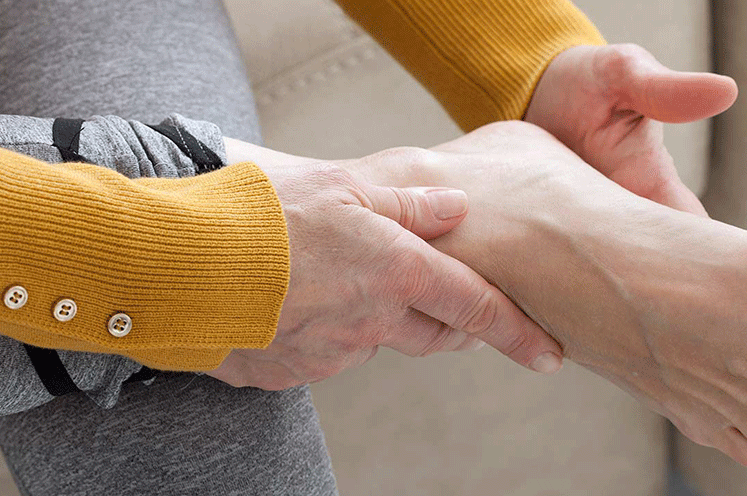Unexplained Swelling Could Be Lymphedema
Suffering from swelling without a known cause? It could be lymphedema. Learn what happens when there are issues with lymphatic drainage.
We offer advanced lymphatic reconstruction to help prevent or manage lymphedema.
Lymphedema is a build-up of fluid in the fatty tissue just under the skin. The condition results in swelling, usually in the arms and legs. It’s the most common long-term complication of cancer treatment and can occur when lymph nodes are removed or damaged during breast cancer surgery or radiation treatment. While there is no cure, our breast reconstruction surgeons can help you manage it to reduce swelling and control pain.
However, not everyone is a candidate for surgical management of lymphedema. Before being referred to one of our lymphedema surgeons, you should be evaluated by our medical lymphedema team.
Suffering from swelling without a known cause? It could be lymphedema. Learn what happens when there are issues with lymphatic drainage.


After a mastectomy or lumpectomy, breast reconstruction surgery has been shown to provide a variety of mental and physical benefits
If your breast cancer surgery will include removing lymph nodes, we may recommend preventive lymphedema surgery. This helps reduce the chance that you will develop lymphedema in the arm where your lymph nodes will be removed.
Preventive lymphedema surgery may be recommended if:
Not recommended if you:
If lymphedema is already present, we may be able to use a microsurgical vascularized lymph node transfer or lymphatic to venous bypass procedure to reconstruct your lymphatic system.
These procedures may be recommended if you:
These procedures may not be recommended if you:
There is no cure for lymphedema, but lymphatic reconstruction may help reduce swelling, heaviness of the limb and the risk for cellulitis.
It will not necessarily reduce the need for a compression sleeve or completely reverse the lymphedema.
We use cookies to improve your website experience. By using this site, you agree to our Terms of Use. Read our Internet Privacy Statement to learn what information we collect and how we use it.